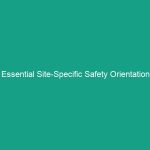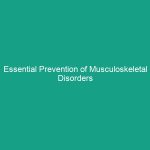Introduction
Good morning team! Today, we are going to discuss an incredibly important topic that directly impacts our daily operations: Essential Safety Culture Guidelines. The purpose of this Toolbox Talk is to equip each of you with the knowledge and tools to build a safer workplace today. Why is this important? Because a robust Safety culture not only protects us from potential Hazards but also fosters a positive work Environment where everyone feels valued and secure.
Understanding Essential Safety Culture Guidelines
So, what exactly are Essential Safety Culture Guidelines? At their core, these guidelines represent a set of principles and practices that create a culture of safety within the workplace. A strong safety culture ensures that every employee prioritizes safety in their daily tasks, understands the importance of following Procedures, and feels empowered to speak up about safety concerns.
The impact of these guidelines on our daily operations is significant. When we embrace a culture of safety, we not only reduce the likelihood of accidents and injuries but also enhance overall productivity and morale. It’s a common misconception that safety is solely the responsibility of management; in reality, it requires the commitment and participation of every employee.
Key Hazards, Risks, and Safety Considerations
Let’s talk about some specific hazards and risks associated with safety culture. Poor safety practices can lead to various hazards including slips, trips, falls, equipment malfunctions, and even exposure to hazardous materials. Ignoring safety protocols can have real-world consequences, such as serious injuries or even fatalities.
Consider this: a simple failure to report a minor hazard can lead to a major accident. For example, if someone notices a wet floor and doesn’t put up a warning sign, it could result in a slip that causes a severe injury. This illustrates just how critical it is for us to adhere to Safety Guidelines and to foster an environment where everyone feels comfortable reporting hazards.
Best Practices, Procedures, & Actionable Advice
Now that we understand the importance of safety culture, let’s dive into some Best Practices that we can implement immediately:
- Regular Safety Training: Ensure you participate in all safety training sessions. These sessions provide vital information about hazards and safety procedures relevant to your job.
- Daily Safety Checks: Take a few moments each day to inspect your work area for potential hazards. Look for things like spills, clutter, and equipment malfunctions.
- Use Personal Protective Equipment (PPE): Always wear the appropriate PPE for your tasks. This includes gloves, helmets, goggles, and any other required Safety Gear.
- Report Hazards Immediately: If you see something unsafe, report it right away. This could prevent an accident and protect your coworkers.
- Encourage Open Communication: Create an environment where everyone feels comfortable discussing safety concerns. This openness can significantly enhance our safety culture.
Consider a recent incident where a worker ignored a small leak in a pipe. Initially, it seemed insignificant, but it led to a larger spill that required extensive cleanup and left several employees exposed to hazardous materials. This incident highlights the importance of taking every safety concern seriously, no matter how minor it may seem.
Regulations, Standards, and Compliance
As we implement these safety culture guidelines, it’s essential to understand the Regulations and Standards that govern Workplace Safety. Organizations like OSHA (Occupational Safety and Health Administration) set strict guidelines to ensure employee safety across various industries.
Compliance with these regulations is not merely a legal obligation; it is critical for protecting employee well-being. When we adhere to safety standards, we not only avoid penalties but create a safer environment for everyone. Remember, safety isn’t just a priority; it’s a value that we must uphold every single day.
Employee Engagement & Discussion
Now, I’d like to open the floor for discussion. Let’s think about our own experiences. What safety challenges have you encountered related to our safety culture? Are there any specific hazards you believe we should address more proactively? Your input is invaluable, and it can lead to improvements in our safety procedures.
Conclusion & Key Takeaways
In summary, we’ve covered the Essential Safety Culture Guidelines and their critical role in building a safer workplace. Remember, fostering a strong safety culture requires commitment from everyone—management and employees alike. By following Best Practices, complying with safety regulations, and maintaining open lines of communication, we can significantly reduce risks and enhance our overall Workplace Safety.
Let’s prioritize safety in everything we do. Thank you for your attention and your commitment to creating a safer workplace for all of us. Together, we can build a culture where safety is not just an obligation but a way of life.


